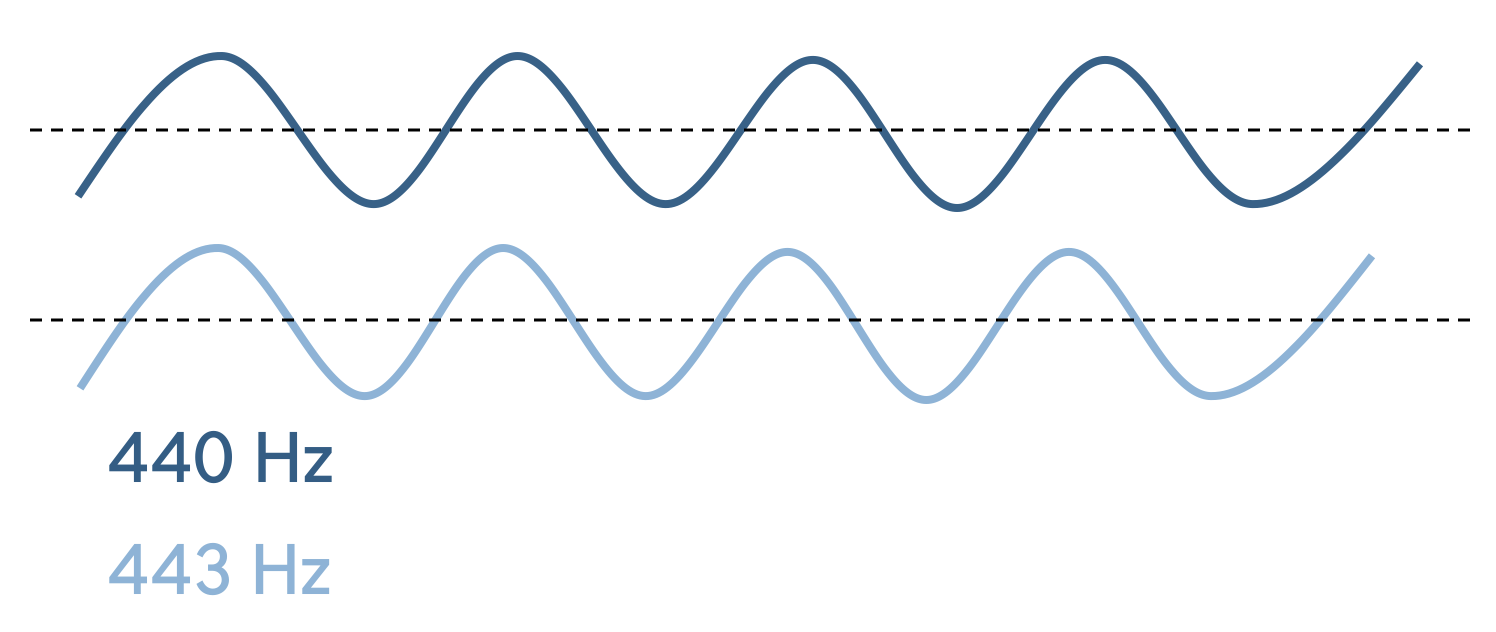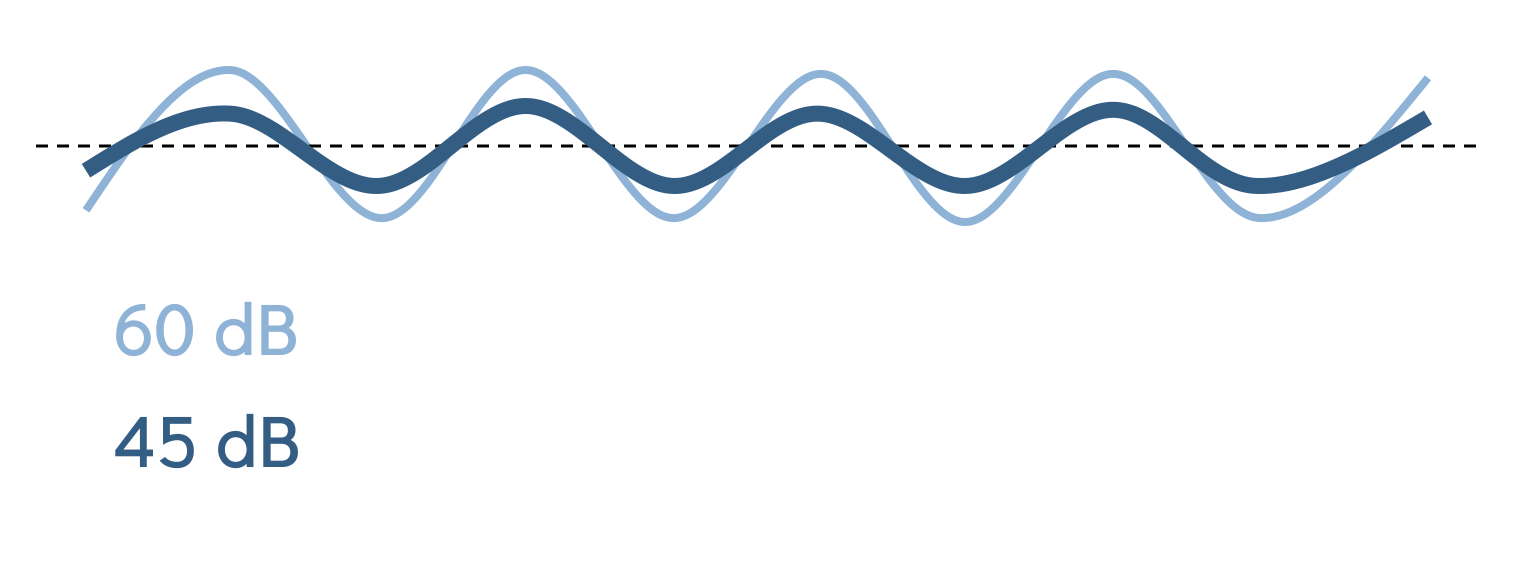THE SCIENCE OF MUSIC
The distinction between music and noise is mathematical form. Music is ordered sound. Noise is disordered sound.
-The Physics Hypertextbook
A CRASH COURSE IN SOUND …
HOW A SOUND WAVE WORKS
•FREQUENCY (the number of wavelength periods in a second) is measured in HERTZ (Hz)
•2 wavelengths per second = 2 Hz (very low sound)
•440 wavelengths per second = 440 Hz (fairly high sound)
Human Hearing Range: 20 – 20,000 Hz
Dog Hearing Range: 67 – 45,000 Hz
Bottlenose Dolphin Hearing Range: 75 – 150,000 Hz
A 440 HZ | THE TUNING PITCH
•Musicians all around the world used to build or tune their instruments to different frequencies (A 435 Hz – A 442 Hz)
The note “A” could vary widely in Hz, meaning that a musician playing at A 435 Hz would sound FLAT (lower-pitched in comparison to other instruments) than a musician playing at A 442 Hz (who would sound SHARP or higher-pitched)
•”A 440” recommended as UNIVERSAL TUNING PITCH by Johann Scheibler in 1834
•Adapted in the United States in 1926
•Not all musicians, countries, instruments use A 440, even today
This is what A440 Hz (without overtones) sounds like.
This is what A432 Hz (without overtones) sounds like.
PITCH
•PITCH: the vertical placement of a note within the range of audible sound
•The frequency of a pitch is determined by the number of sound waves per second (HERTZ - Hz)
•Notes that have a higher frequency (more waves per second) have a higher pitch
•Notes that have a lower frequency (less waves per second) have a lower pitch
INTONATION
•Notes that are IN TUNE play the same note and they vibrate at the same exact frequency.
•Playing two notes in tune with each other will make the note sound louder
•Notes that are OUT OF TUNE play the same note and they vibrate at slightly different frequencies.
•Playing two notes out of tune will cause an unpleasant “beat” as the frequencies clash
A moving sound will seem to be higher in pitch as it approaches, then drop lower in pitch as it passes due to the distance of the sound waves in motion.
VOLUME
•VOLUME: the loudness of a given note
•The volume of a pitch is determined by the amplitude height of the sound wave (DECIBEL - dB)
•Notes that have a larger amplitude have a louder sound.
•Notes that have a smaller amplitude have a softer sound.
•Notice Decibels are measured on a logarithmic scale.
SOUND BECOMES MUSIC …
STANDING WAVES
ANTINODE: oscillates back and forth like a jump rope
NODE: fixed point that does not oscillate
HARMONICS
Creating a node in specific places along a sounding object raises the pitch in a formulaic way.
1 – Fundamental + 1st Harmonic (Note: C)
1/2 – 2nd Harmonic/1st Overtone (Note: C 1 octave higher)
1/3 – 3rd Harmonic/2nd Overtone (Note: G 5th above)
1/4 – 4th Harmonic/3rd Overtone (Note: C 2 octaves higher)
1/5 – 5th Harmonic/4th Overtone (Note: E 3rd above)
1/6 – 6th Harmonic/5th Overtone (Note: G 3rd above)
1/7 – 7th Harmonic/6th Overtone (Note: Bb 3rd above)
Etc. …















